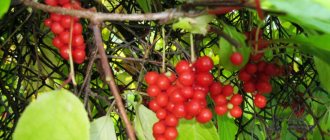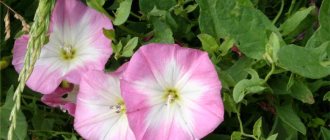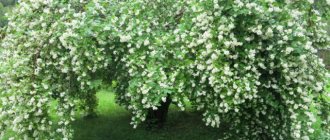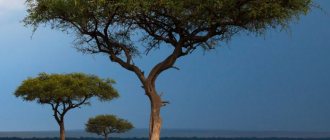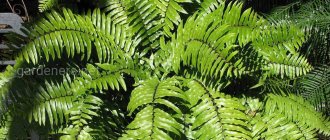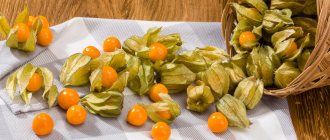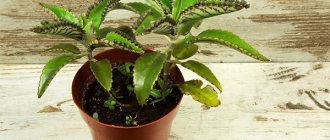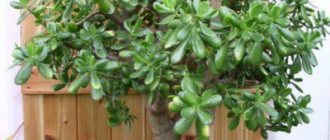The bracken fern is considered the most common and largest fern in Russia. Mature foliage is shaped like an eagle's wing. Hence the name of the plant. In this case, the vascular bundles are located in the rhizome in such a way that in a cross section they look like the image of a double-headed eagle.
Photos with a description of the crop provide a complete description of the plant, namely: what beneficial properties it has, as well as in what form it is used in cooking.
Bracken fern description and varieties
Bracken fern is characterized as a herbaceous perennial, class Fernaceae. It is a representative of the Dennstedtiaceae family. This plant can reach a height of 40 centimeters to one meter. It has a smooth trunk, without scales. The rhizome of the fern is quite developed and can grow in absolutely all directions, and also consists of horizontal and vertical black underground sprouts. Every year, young shoots are formed on such a creeping root system. The leaves of this fern have a pale green tint. They can reach a height of 70 centimeters and have a triangular, feather-like shape. They have a very rigid and dense structure. The stepsons of this plant are located at a distance of up to 20 centimeters from each other. At first they have a twisted shape, rather than resembling a snail shell. The leaves of this fern are located on the branches in pairs, and only the apical shoot is single. The leaves have blunt ends and are lobed at the base, lanceolate. Segments with dense and strong edges are wrapped. And on the lowest pair there are nectaries, which form and secrete sweetish water, which is very popular with ants. The root system of this fern is so large and strong that it can easily withstand very severe frosts and fires. Some scientists assure us that this fern is considered a multi-phylum species, while other botanists are sure that there are only about 10 of them. They are all quite similar, although most of them can be found in the wild. Let's look at some types:
— Pteridium aquilinumvar. Latiusculum
Can be seen growing in the grasslands of Ireland. A herbaceous perennial that has a main stem reaching a diameter of one centimeter. The leaves of this species are quite large and triangular in shape. In autumn, the green part of the fern dies off. The botanist from America M.I. first spoke about this variety. Fornald, specializing in seed plants and ferns.
— Pteridium aquilinumvar. Freei
This subspecies was first described by botanist-pteridologist from America U.R. Maxon.
— Pteridium aquilinumvar. Pseudocaudatum
This herbaceous plant was described by the American botanist, writer and naturalist W.N. Klute. Ferns of this subspecies like to grow in sufficiently lit places and open areas.
— Pteridium aquilinumvar. Latiusculum
This subspecies can be found growing in Japan, China, Canada, USA, Mexico and northern Europe. The first person to introduce this variety is the botanist, mycologist, and geology teacher L.M. Underwood.
In addition to these described subspecies, there are also such varieties as Pinetorum and Pteridium aquilinum subsp. Decompositum Lamoureux ex JAThomson.
It is generally accepted that this variety of fern is quite suitable for food, and in order not to accidentally confuse it with other poisonous species, it is necessary to know the main distinctive features:
— The height of this plant can reach up to one and a half meters, and this fern does not form a bush.
— Fern sprouts have the peculiarity of emerging from the soil one by one. Moreover, the distance between them remains approximately 15 centimeters. In this plant, shoots begin to emerge all together, simultaneously, and from one point.
— The stems of the plant have a clean and smooth structure, which lacks scales, villi and leaves.
It is very difficult to recognize an edible fern in the forest in the spring. After all, the stems are very similar in appearance. An addition will be the presence of old leaves of this fern that have survived the winter. They have a fairly clear pattern of geometric shapes, which each species has its own. This type of fern has leaves with the most round shape at the edges. Those areas where this type of fern grows should be remembered since the summer season, at a time when trips to the forest for berries and mushrooms are quite frequent.
There are a huge number of legends in the world associated with the fern flower. There is a rumor that he has a peculiarity of appearing on the night of Ivan Kupala. And, as the legend says, a treasure is buried in this place. And the flower is preserved and protected by evil spirits. The one who finds this flower will have happiness throughout his life. No one has ever found this flower, although even today people believe this legend. But scientists refute all legends and speculations, claiming that ferns do not produce color. The plant can reproduce only by spores, and not by seed. On the leaf, or more precisely on its lower part, there are small green or brown balls. It is in them that spores ripen - these are sporangia.
Medicinal and beneficial properties
Bracken fern (photos and descriptions will help determine what medicinal and beneficial properties the plant has) is used as a medicinal plant.
Based on its root system, ointments, decoctions and infusions are prepared, which can be used in folk medicine to treat the following diseases:
- arthritis and polyarthritis;
- respiratory diseases:
- childhood rickets;
- migraine;
- rheumatism;
- eczema and abscess.
Indications for use of bracken fern are arthritis, rickets, migraine and eczema.
The plant has the following beneficial properties:
- Decoctions are prepared from the root system and foliage to relieve toothache and headaches;
- the root system is used as a preparation for removing radionuclides;
- young foliage and stems are used to treat coughs of various etymologies;
- fern will help saturate the body with the necessary amount of iodine and potassium;
- It is necessary to take medicinal forms of raw materials in case of stress, increased body weight and decreased performance;
- The plant is useful for radiculitis, low immunity and vitamin deficiency.
For women
Fern can provide significant support for the female body. The powerful antioxidant abilities of the relic plant can be used in home cosmetology to eliminate age-related changes and minor skin defects.
Infusions and decoctions of bracken fern are used in the treatment of adnexitis
With the help of decoctions and infusions at home, you can treat gynecological diseases. In medical practice, these solutions are very often used for douching for adnexitis.
In case of inflammatory processes of the genitourinary tract in women, internal administration of these medications is allowed.
Auxiliary treatment measures using bracken fern can be combined with taking medications, including potent antibiotics.
The plant will help solve the following women's problems:
- relieves migraines;
- helps cope with metabolic disorders;
- relieves pain during the premenstrual period;
- improves the condition of varicose veins;
- eliminates acne.
The use of fern during pregnancy and children is strictly prohibited.
Fern contains various highly toxic compounds and poisons. As an example, we can cite a whole group of alkaloids. The root system and foliage contain components that stimulate blood flow.
All this can create danger during pregnancy. Therefore, during pregnancy or while breastfeeding, the use of bracken fern in any form is strictly prohibited.
For men
Fern is beneficial for the male body due to its high concentration of nutrients. It is able to act as a valuable source of biologically active components during physical and psycho-emotional stress.
As a preventive measure, Orlyak should be used to increase performance , as well as to neutralize radioactive radiation harmful to the body.
For men, bracken is used to treat prostatitis.
Fern can be used to treat male infertility, sexual weakness or prostatitis.
For children
Bracken fern is often used during the treatment of children. Its toxic property is used in the form of an anthelmintic drug , and nutritional elements are involved in the treatment of rickets with diathesis.
Due to the fact that the sprouts contain a huge amount of copper, the blood is saturated with oxygen, which eliminates developmental delays in the child.
However, the product is allowed for use by children over 2 years of age. Raw materials should be introduced into the diet in small portions. In this case, before eating, it is recommended to consult a pediatrician so as not to harm the young body.
Bracken fern propagation
Bracken fern is characterized as an asexual plant, so there are several methods of its propagation, these are: shoots, rhizome division and spores.
Reproduction of this plant by the vegetative method means the formation of rooted cuttings, which can then be separated from the main one and transplanted to their permanent place of growth. First of all, select fairly long and fluffy fern shoots. They are bent to the ground and pressed down a little with something heavy, such as a stone. This should be done in the spring, when active vegetative growth is underway. After some time, the arrow begins to sprout roots.
In the wild, lichens reproduce with the help of spores, but at home this method is considered a rather long and painstaking process. In September, the leaf is cut and dried. Afterwards, the spores are scraped off onto a piece of paper. The dried material for sowing remains stored until the winter season in sealed packaging. And from January to February they begin to prepare containers for seedlings. To do this, containers are filled with a mixture of peat and well moistened. The spores are poured out and covered with glass. In order for the spores to germinate, place the containers in a fairly bright and warm place, while not forgetting to constantly spray with warm water and ventilate. After about two months, green moss begins to form on the surface of the soil, at which point the glass is removed. When the seedlings have grown, they begin to be planted in separate containers, and by May the seedlings are completely ready for planting in open space.
The simplest and yet most effective way to propagate this type of fern is by dividing the roots. For this procedure, a sufficiently mature bush with a well-developed rhizome is taken, which can quickly recover after this pruning. In the spring, when the likelihood of frost has disappeared, you can begin to dig up bracken fern. The root system is divided into parts with one and two buds. The cut area should be treated with crushed activated carbon, and then immediately planted in fairly moist soil.
Preparing Edible Fern
Garden fern - planting and care in the country
Bracken is a healthy and tasty plant that is widely used in oriental cuisine. You can use it to prepare salads, soups, appetizers, stews and fried dishes. Young fern shoots go well with rice, noodles, vegetables, meat and seafood. Bracken has a positive effect on the digestion process, is rich in vitamins, and its calorie content is quite low - 34 kcal.
Interesting! Fried fern is especially popular - this method of cooking helps preserve the taste and crispness of the shoot.
Recipes with fried fern
Almost all recipes can be prepared with fresh, frozen, dried and salted fern. You just need to take into account some nuances: it is recommended to soak dried pagons in warm water for several hours, salted ones must be thoroughly rinsed.
With onion
Cut 2 medium onions into half rings, fry in vegetable oil until golden brown, add 500 g of boiled fern, cut into small pieces, into the frying pan, fry for several minutes. This is a simple but delicious dish. If desired, you can add carrots, season with sour cream and mayonnaise. If you season it with soy sauce, you get Korean fern.
Fern dishes
With potato
300 g of boiled sprouts should be fried until crispy and placed on a plate. Place 500 grams of potatoes, cut into long pieces, into a frying pan and fry until tender. Salt, pepper, add prepared fern. If desired, you can add onions and garlic. The potatoes acquire a delicious mushroom aroma.
Where does bracken fern grow?
The most favorite place for this fern to grow is in light forests. It can be seen on all continents, except Antarctica, of course. The plant does not grow in deserts and steppes. Fern loves sandy soils, coniferous forests and deciduous ones where birch trees grow. Often this plant prefers to be located on open hills, thicket of bushes and forest edges. This fern clogs the grass at the edge and forms continuous thickets in a small area. Often, bracken fern can be seen growing in clearings, pastures, plantations, and abandoned fields. And during haymaking in some countries this plant is considered a rather difficult weed to remove. It can grow in the mountains, but only at a level not higher than the mid-mountain zone. In our country, this type of fern grows independently in regions such as Siberia, the Urals, the European part and the Far East. This type of plant has good growth and development in light and poor soils, and also grows well in limestone.
Let's look at such an issue as collecting ferns. This plant is harvested in mid-spring. If you look at folk signs, then this period comes when the lily of the valley begins to bloom, or the bird cherry fades. The collection should be carried out on young, new shoots; they break quite easily. If the sprouts have become stronger and denser, and begin to bend, then the collection needs to be completed. The stem should be 20 to 25 centimeters long and approximately one centimeter thick. They are cut off at the very base so that the crop can continue its development and growth. These shoots should be tied into bunches. The plant's sprouts harden quite quickly, which is why they need to be made quickly enough. These collected shoots are salted in separate clutches, and each layer is sprinkled quite heavily with table salt. Next, the top is covered and oppression is installed. The shoots remain in this position for approximately 15-20 days. And only after this time the tub is opened and the brine is drained. Afterwards, the upper layers are placed on the contrary downwards, and the lower ones in their place - on top. The brine is poured in again, but this time the amount of salt is reduced by approximately five times. Before use, this salted fern should be soaked in water for about 7 hours, and then boiled for about five minutes.
This type of fern is collected differently in different regions. Let's look at them:
- Leningrad region.
Harvesting of this plant in this region begins around mid-May and continues for about a month. Although the exact date may vary, it depends on the weather in the area. The signal that the fern is suitable for collection is a peculiar crunch. The period of this process is not long. That is why the plant can be frozen in batches, if it is impossible to immediately process it. Salting is done for longer storage.
— Moscow region
In the Moscow region, this type of fern grows almost everywhere: in deciduous plantings, pine forests, parks and gardens. Only new, young shoots are suitable for harvesting this plant. That is why the collection is carried out at an early stage of the growing season. This must be done before the leaves bloom and the shoots are still quite soft. The time period from the 15th of May to the first days of June is suitable for this process.
— Siberia
In this region, harvesting begins at the very end of May. It is necessary to monitor the sprouts in the forest in the spring, since there is no exact date of collection. The shoots begin to emerge from the soil together with the first flowers, and then the sprouts grow to the desired size.
— Ural
As mentioned above, this fern can be seen throughout our country. Also in the Urals you can find this plant on light slopes and in forests. For food consumption, they begin to collect it here from the second half of May, and this lasts approximately 25 days.
When and how to collect?
Edible ferns begin to be harvested around mid-May. Harvesting lasts about two to four weeks. It is believed that the best period for collecting is the time of flowering of lilies of the valley, lungwort and lights. At this time, the fern reaches a height of 25–30 cm and all the juices are concentrated in the stem.
This moment must not be missed, since in its fully bloomed form the bracken fern is not suitable for food - nutrients go into the leaves, and the plant becomes bitter, tough and even life-threatening.
As a rule, one to three stems grow from the root, so you can pluck or cut several at once, leaving “stumps” 4–5 cm high.
Bracken fern care
Although this type of fern is considered a forest crop, a large number of gardeners grow it in their garden plots. The plant is quite widely used in landscape compositions. But before growing, you need to know the main rules for caring for ferns:
— When purchasing an adult plant, you need to carefully examine its appearance. The leaves of the plant should be intact, green in color, without damage, dry and with a yellow tint. Before planting, the purchased fern should be left for a day in a shaded place so that the crop can regain its strength.
— The best place for this fern to grow is a shaded area of the garden. Thus, the leaves of the plant will have the most intense green shade, whereas in the sun the color of the leaves will be much paler.
— To grow this plant, you need fairly light soil with an average level of fertilization. A mixture of peat, fine sand and deciduous soil is ideal. This fern has good growth, growing in soil containing lime. But this plant should definitely not be planted in loam.
— In an open space, this plant can easily do without insulation for the winter. The leaves of the fern fall off, but its root system is so deep that it is not afraid of any frost.
— Keeping the soil constantly moist is considered a very important condition. Watering should be done immediately after the soil dries, but do not allow the liquid to stagnate.
— Fertilizers should be applied in doses. Fertilizers are applied for the first time when the first shoots form. For this purpose, special mineral complexes are used. The dosage must be observed as stated in the instructions.
Very often this fern is used to decorate swamps and streams, various reservoirs, since this plant is considered to be quite moisture-loving.
How and for how long to store?
Fresh bracken fern loses its beneficial properties within 24 hours. At a temperature of +20 °C, shoots can be stored for no more than 12 hours, at +30 °C - three hours.
If the stems are picked and you can’t cook them in the near future, you can freeze them. To do this, the stems need to be sorted, washed, dried, sprinkled with salt and packed in plastic bags, then put in the freezer. Before using for food, frozen stems of bracken fern must first be boiled for 10 minutes, draining the water periodically. You can do the opposite: first boil the shoots and then freeze them, sprinkling them with salt. In any case, cooking is required, since bracken fern is poisonous in its raw form. For the same reason, you should not eat stale shoots. So, if you put them on the balcony, forgetting to process them, and found them a day later, you will have to throw them away.
Properly prepared fern smells like spring herbs and tastes like either young spinach or asparagus. Some smell mushrooms.
In terms of chemical composition, the plant is rich in potassium, magnesium, sodium, calcium, copper, iron, manganese, zinc, and selenium. It contains vitamins A, C and group B. It is low in carbohydrates and fat, which makes it an excellent dietary product. 100 g of fern contains only 34 kcal.
Use in cooking
Edible fern species are actively used in cooking. Various salads are often prepared from young leaves. In addition, peculiar “snails” are fried, boiled, salted and pickled for the winter, and are also used as a special seasoning for meat.
The most popular edible fern among culinary experts is the common bracken. It received its unusual name due to its resemblance to the wing of a bird of prey.
This plant is quite common throughout Russia, and it is not difficult to find.
Young shoots, which are used to prepare various dishes, are formed in May. At first they resemble a kind of “snail”, and as they develop they unfold and become like a hook.
The petiole of the edible leaf is called rachis. It tastes very much like porcini mushrooms. Raw rachis is poisonous, so it is imperative to heat them.
Diseases and pests
The bracken fern has an average immune system, so it is often affected by pests and various diseases. Scale insects, whiteflies, and thrips pose a danger to the plant. To avoid the death of the plant, it is necessary to treat it with specific preparations in time.
Important! The use of insecticides is carried out with care; they are diluted strictly according to the instructions so as not to harm the flower.
The bracken fern is a beautiful plant that can be a wonderful decoration for the garden. The flower is unpretentious in care; if you follow the planting rules, it will delight you with its appearance for a long period.
What to take from him?
The most common “bribe” from bracken is rachis - young, not yet unfurled leaves with petioles. They are broken off near the ground. From a botanical point of view, the name is not entirely correct, but it stuck.
The rachis should be no more than 20-25 cm and break off with a crunch. Young shoots are not necessarily green - they can be dark green, brownish, purple and even striped. These are just varieties, but the taste is the same.
It is the unexpanded leaves that are eaten. They are rich in protein, vitamins, carotene, organic acids, flavonoids, and microelements. Fern also contains the substance ecdysterone, which has a stimulating effect, reduces cholesterol in the blood, and inhibits (suppresses) the growth of sarcoma cells and some cancerous tumors.
The use of fern has a beneficial effect on growth processes, on the condition of the mucous membranes, improves the condition of the endocrine system, increases muscle performance, and promotes the removal of radionuclides. It is also low in calories.
Fern shoots should not be consumed raw - they contain the carcinogen ptaquiloside and the enzyme thiaminase, which destroys vitamin B1. Blanching in salt water or soaking in salt water is a necessary preparation before cooking to remove ptaquiloside. Thiaminase is destroyed during heat treatment.
If the leaves have already unfurled, you can collect and use the unfurled leaves. Just don’t eat it, but find another use for it:
- the leaves of the plant have a specific (does not mean unpleasant) odor, due to which they have a repellent (repellent) effect on bedbugs, flies, cockroaches, spiders;
- an infusion of leaves has an insecticidal effect on spider mites, aphids and thrips;
- leaves prevent rotting - you can wrap meat, fish or vegetables in them - they last longer, you can put vegetables in storage with leaves;
- can be added to livestock bedding, this improves the mineral content of manure and suppresses putrefactive processes;
- The antimicrobial properties of the leaves allow them to be used as a wound healing agent.
Landing
Preferably living in light forests, Orlyak loves light soils, including poor soils and limestone. Despite its aggressiveness, this fern has been turned by people into a cultivated plant, the usefulness of which has found application in cooking and medicine. But in some areas they fight it using special methods, since as a weed it is difficult to mow it down.
Difficult to mow
Forest fern in the garden: planting and care
Nevertheless, Orlyak is of economic importance. In a number of countries, shoots and leaves that are not fully expanded (snails) are eaten like asparagus. The recipe involves pre-soaking in salt water. Next, the plant is fried. Or it is used in the preparation of salads and seasonings, or pickled. Kamchatka fern, for example, is grown for export to Japan and China. Eastern taiga dwellers have included this plant in their diet since ancient times. It contains about the same amount of easily digestible protein as grains. Far Eastern fern is fried in oil and released in the form of canned food.
Interesting. This suggests that it can be cultivated as an edible, medicinal or ornamental plant. Both the Moscow region and the Leningrad region (region) are suitable for this.
Reproduction occurs in the following ways:
- Separating suckers from roots is a simple method. It is important to water the plant well.
- The spores are scraped from the leaf, dried and sown on the substrate, sprayed daily. After a month they germinate and can be transplanted into the garden.
Bracken can be grown in fields, steppes and forest areas as a raw material for landscape, medicinal or food purposes. In order to plant, you need to prepare the field. Over the course of 2 or 3 years, it is necessary to make protective strips. The iris pickle plant is suitable for this. Sections of fern rhizomes are planted between rows. For 1 sq. meter there is one rhizome. Crops of iris pickle in the same field will protect Orlyak from the sun and wind with hard leaves. Dried plants will create mulch for next year.
In the central zone of the Russian Federation, the crop is planted near trees that create shade, taking into account precipitation of more than 580 mm, or in a sunny place with additional abundant watering and spraying. Natural rainfall of 300 mm is insufficient for the plant to grow under such conditions. In forest-steppe zones, field preparation includes sowing iris pickle for the winter with germination in the spring. After 2 or 3 years, the iris will grow to 70 cm. Then Orlyak is planted using agricultural machinery.
Agricultural machinery
When planting in the garden, it is recommended to add forest soil to the hole, as well as provide good drainage. It is better to place the plant in a flowerbed in the spring when the shoots bloom. It is important to plant the plant immediately, immediately after digging it up in the forest, before the roots and leaves wither.
Features and collection of the plant
To make the edible fern tasty and tender after cooking, its shoots are collected at a young age, before they become tough.
The season for collecting such plants is early spring, when the leaves on the trees begin to bloom and lush grass appears. Edible fern should be immediately used for preparing various dishes or processed into a semi-finished product that will be stored for a long time. Semi-finished products include three types of plants: frozen fern, salted and dried. The first option is the simplest and most common among housewives. However, it is not used on an industrial scale.
How to prepare fern?
Freshly picked fern rachis should be processed, like mushrooms, as soon as possible. By the way, they have a mushroom flavor.
The most common option for harvesting fern for long-term storage is salting .
There are many ways, I salted it like this:
- Fern – 3 kg.
- Salt – 750 g.
Pour a little salt into the bottom of a large enamel pan, lay out a 2-3 centimeter layer of fern, sprinkle generously with salt. And repeat this until the fern and salt run out. The top layer of salt is the thickest. Press down on top with a large flat plate, put pressure on it and put it out of sight in a cool place for 3 weeks.
Next stage:
- Fern - how many came out;
- Water – 1 liter;
- Salt – 350 g.
After three weeks, remove and drain the resulting liquid. The rachis will become dark olive and flexible. Remove the rachis from the pan and place tightly in sterile jars. Dissolve salt in water, pour this brine over the fern, and seal. Store in a cool place. Until next season there are no problems.
You can freeze it , it’s easier and faster:
- Fern – 1 kg;
- Water – 4 l;
- Salt – 100 g.
Boil water, dissolve salt. Place chopped fern in boiling water in 0.2 kg portions, cook for 3 minutes after boiling, remove with a slotted spoon, place in a colander.
When cool and dry, place in containers and freeze.
You can also dry it Unlike other products, boiled fern is dried, otherwise the rachis will become woody when dried. The principle of cooking is the same as when freezing, but it’s better not to cut it.
You can dry it by laying it out in the sun, nothing will harm it. After drying, place only the petioles for storage; the rest must be shaken off. Store like dried mushrooms - fern is also hygroscopic.
Fern salad
Description of the species
- The herbaceous perennial plant belongs to the hypolepis family. This is one of the oldest representatives of lichens.
- The average height of a bracken plant is from 35 to 120 cm. Some specimens, for example, in the southern regions, grow up to 150-200 cm.
- Ferns have creeping and long roots.
- When in full bloom, the bracken has a leaf-like branch - a frond. The feathery appearance of the frond resembles an eagle's wing, hence the plant's name.
- At the beginning of its growth, the bracken fern has a snail-shaped, spiral shape. The photo of the bracken clearly shows an adult and an embryonic plant.
- At the beginning of growth, the young petiole is covered with small villi. An adult plant has no hairs. The lower feathery leaves have honey mushrooms (nectaries). The structure releases sugar liquid. Typically, plants attract pollinating insects in this way.
- Once every few years, a tunic with gametangia forms on the leaves. Spores develop, dry out and fall off. This is how the species is preserved in case of unfavorable conditions and reproduces.
- Young fronds are green. Other types of bracken are purple, dark green with stripes, and brown.
All mature plants acquire a green color. The light-loving fern in dense forests and shady lowlands becomes thinner and grows poorly. Good specimens for harvesting grow in clearings, forest edges and along slopes. The plant grows well in nutritious soils of broad-leaved and coniferous forests.
Edible bracken grows intensively at temperatures of +15-20 degrees. The increase ranges from 5 to 17 centimeters (daily). Lower temperatures slow down stem growth several times. The plant has very long roots, and the petioles emerge at varying distances from each other.
It will be interesting to read about the ways to use Fragrant Rue.
There are single shoots or group clusters. The branched rhizome is one of the characteristic features of this species. The roots lie deep in the ground - up to 150 cm.
This arrangement allows the plant to survive fires, drought and frost. Fern reproduction occurs vegetatively (roots) and spores. The wind carries the seed material from July to October.
Orlyak composition
Bracken roots contain lipids, aromatic substances and carbohydrates:
- Xylose;
- arabinose;
- galactose;
- fucose.
The stems and leaves of fern contain a number of acids:
- Vanillin;
- apple;
- cinnamon;
- coffee shop;
- protocatechuic;
- benzoin;
- ferulic;
- kumarovaya.
The upper part of the plant contains: thiaminase (enzyme), triterpenoids, ptaquiloside. All parts of the fern contain a lot of minerals and vitamins.
The composition of bracken includes the following elements:
- Carotene;
- lignin;
- routine;
- lutein;
- isoquercitrin;
- steroids;
- tannins;
- succinic and fumaric acid;
- sesquiterpenoids.
Fern is rich in proteins, fructose and pectin. Bracken contains a lot of amino acids (leucine, tyrosine, valine, isoleucine, threonine, methionine). The stems of the plant contain vitamins: E, PP, A, B2. Microelements are represented by a set of substances: copper, calcium, iron, potassium, manganese, zinc, iodine.
Fern contains cobalt, sodium and magnesium. At the beginning of growth, the fern accumulates phosphorus. During the late growing season, there is more lead in the plant. Next, we will consider the properties of bracken fern and its characteristic features.
